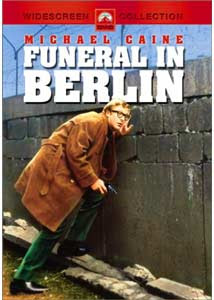 Having now seen The She-Beast (La Sorella di Satana) I can confirm that the picture quality on the Alpha DVD is indeed every bit as atrocious as I’d heard it was. Still, it only cost me four dollars, so I guess I can’t complain. And what is the actual movie like? If you only know Michael Reeves from his 1967 masterpiece Witchfinder General you’ll find the tone of The She-Beast rather surprising. It’s a kind of horror farce. Very fast-moving, and very entertaining, but certainly nowhere near as good as his two later films. Barbara Steele was only available for three days’ shooting so her part is fairly small, and it’s odd seeing her in modern dress. She and Ian Ogilvy are Veronica and Philip, British tourists in Transylvania, but instead of vampires they encounter a long-dead witch in a lake. They do meet the Count von Helsing though, who explains there are no vampires there any more because his family wiped them out. Unfortunately there are still plenty of supernatural nasties, including the aforesaid aquatic witch. Almost as disturbing is the lecherous and drunken inn-keeper. In fact von Helsing himself is a little on the disturbing, or at leat wildly eccentric, side. After a motoring mishap Philip finds himself fished out of the lake, but where is Veronica? It turns out that only von Helsing can help him to get his missing wife back.
Having now seen The She-Beast (La Sorella di Satana) I can confirm that the picture quality on the Alpha DVD is indeed every bit as atrocious as I’d heard it was. Still, it only cost me four dollars, so I guess I can’t complain. And what is the actual movie like? If you only know Michael Reeves from his 1967 masterpiece Witchfinder General you’ll find the tone of The She-Beast rather surprising. It’s a kind of horror farce. Very fast-moving, and very entertaining, but certainly nowhere near as good as his two later films. Barbara Steele was only available for three days’ shooting so her part is fairly small, and it’s odd seeing her in modern dress. She and Ian Ogilvy are Veronica and Philip, British tourists in Transylvania, but instead of vampires they encounter a long-dead witch in a lake. They do meet the Count von Helsing though, who explains there are no vampires there any more because his family wiped them out. Unfortunately there are still plenty of supernatural nasties, including the aforesaid aquatic witch. Almost as disturbing is the lecherous and drunken inn-keeper. In fact von Helsing himself is a little on the disturbing, or at leat wildly eccentric, side. After a motoring mishap Philip finds himself fished out of the lake, but where is Veronica? It turns out that only von Helsing can help him to get his missing wife back.Reeves directs with plenty of energy and style. Ogilvy and John Karlsen (as von Helsing) give spirited and rather frenetic performances. Barbara Steele hasn’t much to do, unfortunately. All in all though it’s fairly amusing and quite diverting, and it has an odd flavour of its own. It’s enjoyable as long as you don’t expect too much from it.




























